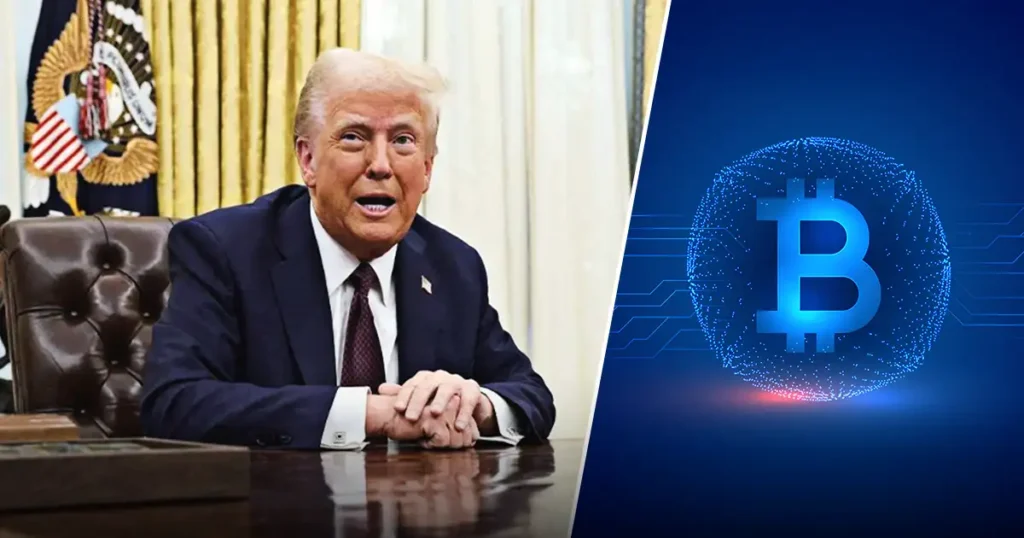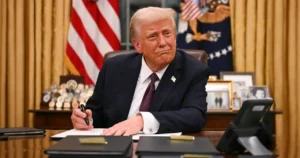The intersection of politics and cryptocurrency has long been a topic of intrigue, with governments worldwide grappling with how to regulate or embrace this rapidly evolving industry. In a groundbreaking move, former U.S. President Donald Trump recently delivered on a promise that sent ripples across the financial and crypto landscapes—a complete ban on Central Bank Digital Currencies (CBDCs). This bold step cements his legacy within the crypto community and raises critical questions about the future of money, digital assets, and individual financial sovereignty. Let’s unpack the ramifications of this decision and explore what it means for various stakeholders.

Understanding the Basics: What Are CBDCs?
Before delving into Trump’s decision, it’s essential to understand what CBDCs are and why they’ve been a point of contention. Central Bank Digital Currencies are digital versions of a country’s fiat currency, issued and regulated by its central bank. Unlike cryptocurrencies such as Bitcoin or Ethereum, which are decentralized and operate on blockchain technology without a central authority, CBDCs are entirely under government control.
Proponents argue that CBDCs can enhance financial inclusion, streamline monetary policy, and improve cross-border transactions. However, critics caution against potential risks, such as loss of privacy, government overreach, and the erosion of decentralized financial systems. It is within this context that Trump’s move takes on immense significance.
Trump’s Stance on CBDCs and Cryptocurrency
Donald Trump’s views on cryptocurrency have evolved over the years. Initially critical of Bitcoin and other cryptocurrencies, he labeled them a threat to the U.S. dollar’s dominance. However, as the crypto market matured and concerns over CBDCs’ implications grew, Trump shifted his position, aligning with crypto enthusiasts who value decentralization and individual freedom.
During his 2024 presidential campaign, Trump promised to “protect American financial freedom” by banning CBDCs. He argued that these digital currencies could lead to unprecedented government surveillance and control over personal finances, fundamentally altering the relationship between citizens and the state.
Why Ban CBDCs? Trump’s Reasons
Trump’s rationale for banning CBDCs revolves around several key points:
- Protection of Privacy: CBDCs could enable governments to monitor every transaction made by individuals, undermining financial privacy. Trump’s decision reflects a commitment to safeguarding personal freedoms.
- Preventing Government Overreach: By giving central banks direct control over digital transactions, CBDCs could be used to implement social credit systems or enforce monetary policies that disproportionately affect certain groups.
- Preserving Decentralization: Trump’s ban reinforces the importance of decentralized financial systems, aligning with the core ethos of blockchain technology and cryptocurrencies.
- Encouraging Innovation: By opposing CBDCs, Trump aims to foster innovation in the private sector, allowing cryptocurrencies and blockchain startups to thrive without government interference.
Global Context: The CBDC Race
Globally, countries like China, the European Union, and India are racing to develop and implement CBDCs. China’s digital yuan has already been rolled out in several regions, raising concerns about geopolitical power dynamics and the potential for authoritarian control. In contrast, Trump’s decision to ban CBDCs positions the U.S. as a bastion of financial freedom, potentially attracting crypto businesses and investors wary of government overreach in other countries.
However, this move also sets the U.S. apart from its allies and competitors. While some applaud the decision, others argue it could hinder America’s ability to compete in the global digital economy.
Implications for the Crypto Community
The ban on CBDCs has been hailed as a victory by many in the crypto community, but its broader implications warrant closer examination:
- Boost for Cryptocurrencies: With CBDCs off the table, decentralized cryptocurrencies like Bitcoin and Ethereum could see increased adoption as alternatives to traditional fiat systems.
- Regulatory Clarity: Trump’s stance provides clarity for the crypto market, signaling that the U.S. government supports decentralized finance (DeFi) over state-controlled digital currencies.
- Investor Confidence: The ban could attract crypto investors and companies to the U.S., creating a more robust and innovative blockchain ecosystem.
- Potential Risks: Critics argue that without a CBDC, the U.S. could fall behind in the global digital currency race, potentially ceding economic influence to countries like China.
Criticism and Controversy
As with any major policy decision, Trump’s ban on CBDCs has its detractors. Critics from both political and economic circles have raised concerns:
- Economic Isolation: Opponents argue that rejecting CBDCs could isolate the U.S. from international financial systems increasingly reliant on digital currencies.
- Missed Opportunities: By banning CBDCs, the U.S. may miss out on opportunities to modernize its monetary system and enhance financial efficiency.
- Political Motivation: Some view Trump’s decision as a populist move aimed at solidifying support from the crypto community rather than a well-thought-out policy.
What Does This Mean for Everyday Americans?
For the average American, the ban on CBDCs has both immediate and long-term implications:
- Greater Financial Privacy: Without a CBDC, citizens retain greater control over their financial data, reducing the risk of government surveillance.
- Increased Adoption of Cryptocurrencies: As decentralized alternatives gain traction, individuals may need to become more familiar with using cryptocurrencies for everyday transactions.
- Potential Economic Shifts: The absence of a CBDC could lead to changes in how monetary policy is implemented, potentially impacting inflation, interest rates, and economic stability.
Future Outlook: The Road Ahead
Trump’s decision marks a pivotal moment in the ongoing debate over the future of money. While the ban on CBDCs aligns with the principles of financial freedom and decentralization, it also raises questions about the U.S.’s role in the global digital economy.
Moving forward, several factors will shape the impact of this decision:
- Legislative and Legal Challenges: Trump’s ban is likely to face scrutiny from lawmakers and legal experts, potentially leading to court battles or legislative amendments.
- Technological Innovation: The private sector’s response will be crucial in determining how the U.S. capitalizes on its decentralized approach to digital finance.
- Global Dynamics: As other countries advance their CBDC initiatives, the U.S. must navigate a delicate balance between maintaining financial freedom and staying competitive in the global economy.
Conclusion
Donald Trump’s fulfillment of his promise to ban CBDCs represents a watershed moment in the intersection of politics and cryptocurrency. While the move has been celebrated by the crypto community, it also underscores the complexities of navigating a rapidly evolving financial landscape.
By prioritizing decentralization, privacy, and innovation, Trump has positioned the U.S. as a defender of financial freedom. However, the long-term success of this approach will depend on the ability of policymakers, businesses, and individuals to adapt to a new era of digital finance. As the world watches this bold experiment unfold, one thing is clear: the debate over the future of money is far from over.






